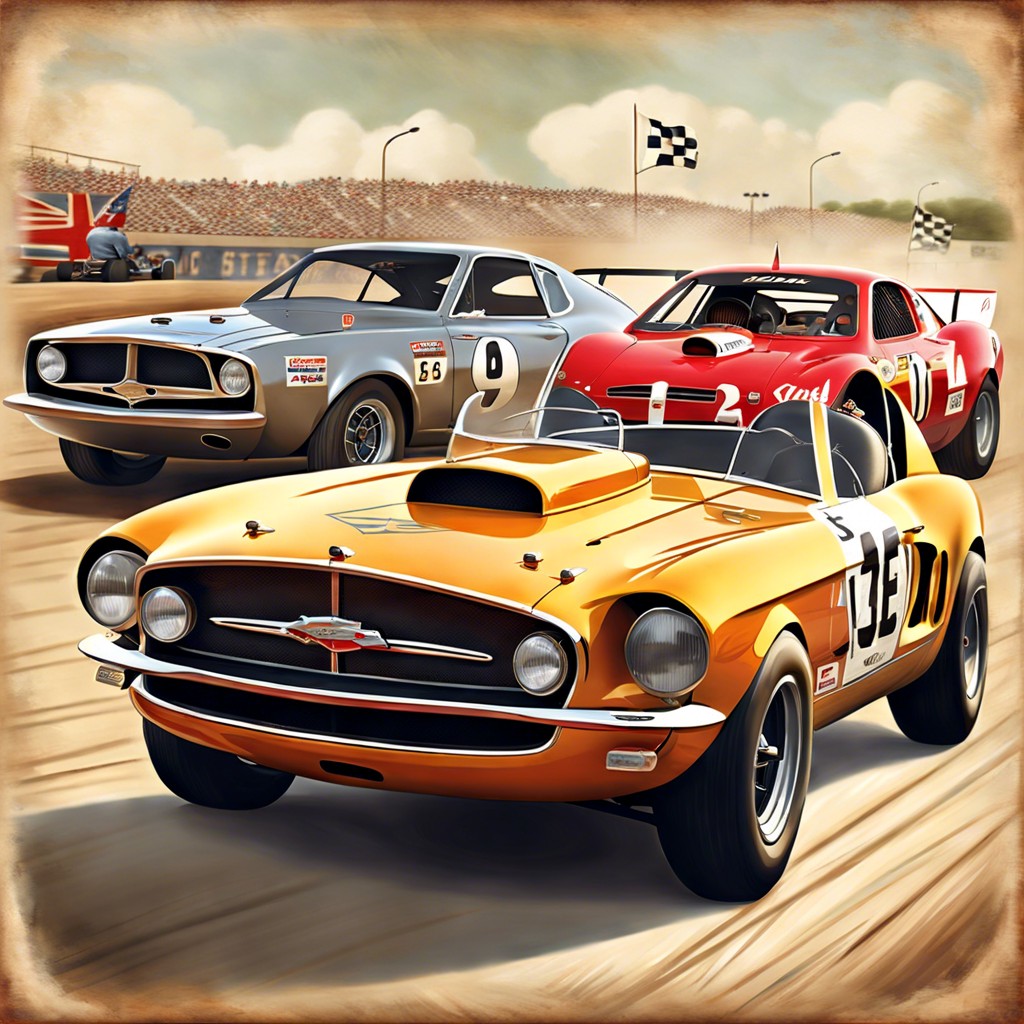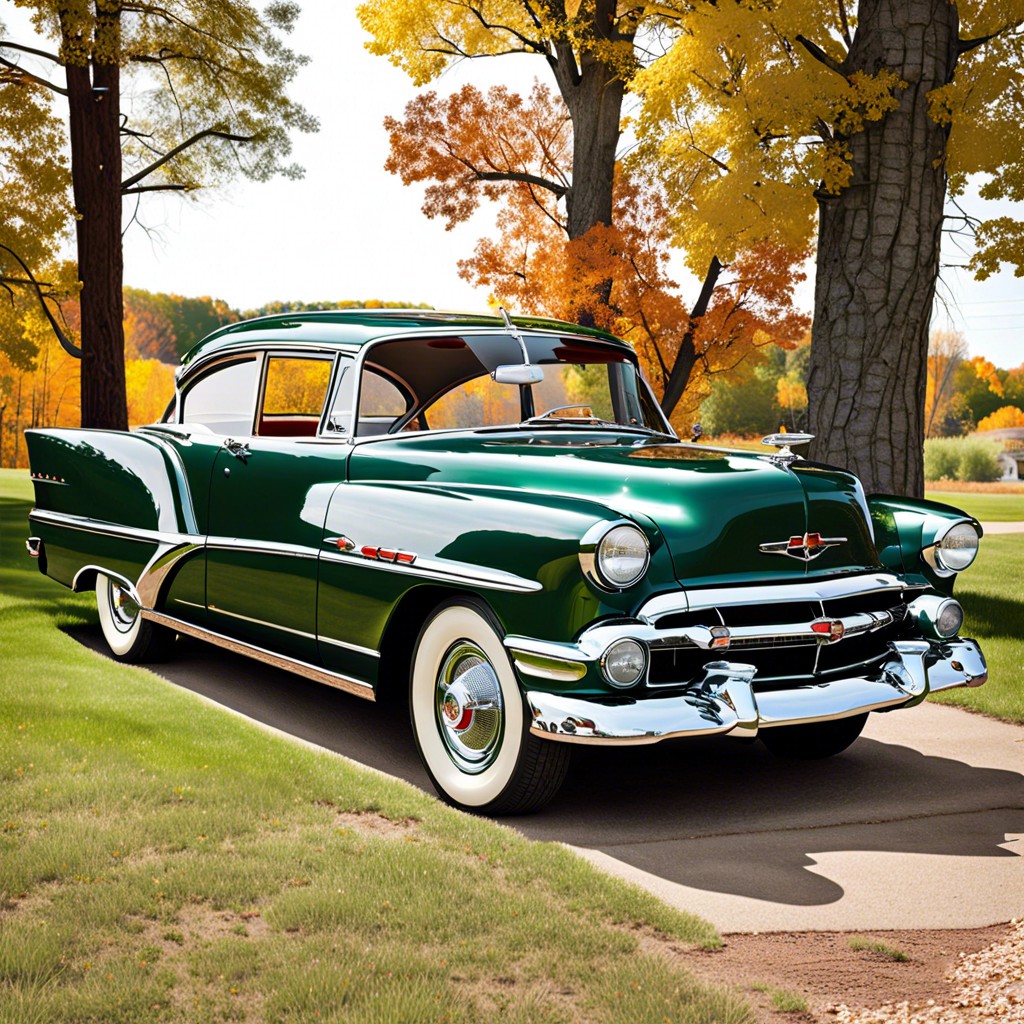Last updated on
Discover the key factors to consider when purchasing a classic Ford Bronco, ensuring a decision that balances nostalgia with practicality.
Key takeaways:
- Classic Ford Bronco debuted in 1966 as Ford’s first SUV.
- Classic Ford Bronco has a distinct boxy design and solid front axle.
- Classic Ford Bronco influenced off-road culture and aftermarket industry.
- Collectibility factors include condition, model year, rarity, provenance, and modifications.
- Classic Ford Bronco influenced modern SUV design in off-road capability, boxy aesthetics, customization, simplicity of maintenance, and advanced 4×4 systems.
History and Development of the Classic Ford Bronco
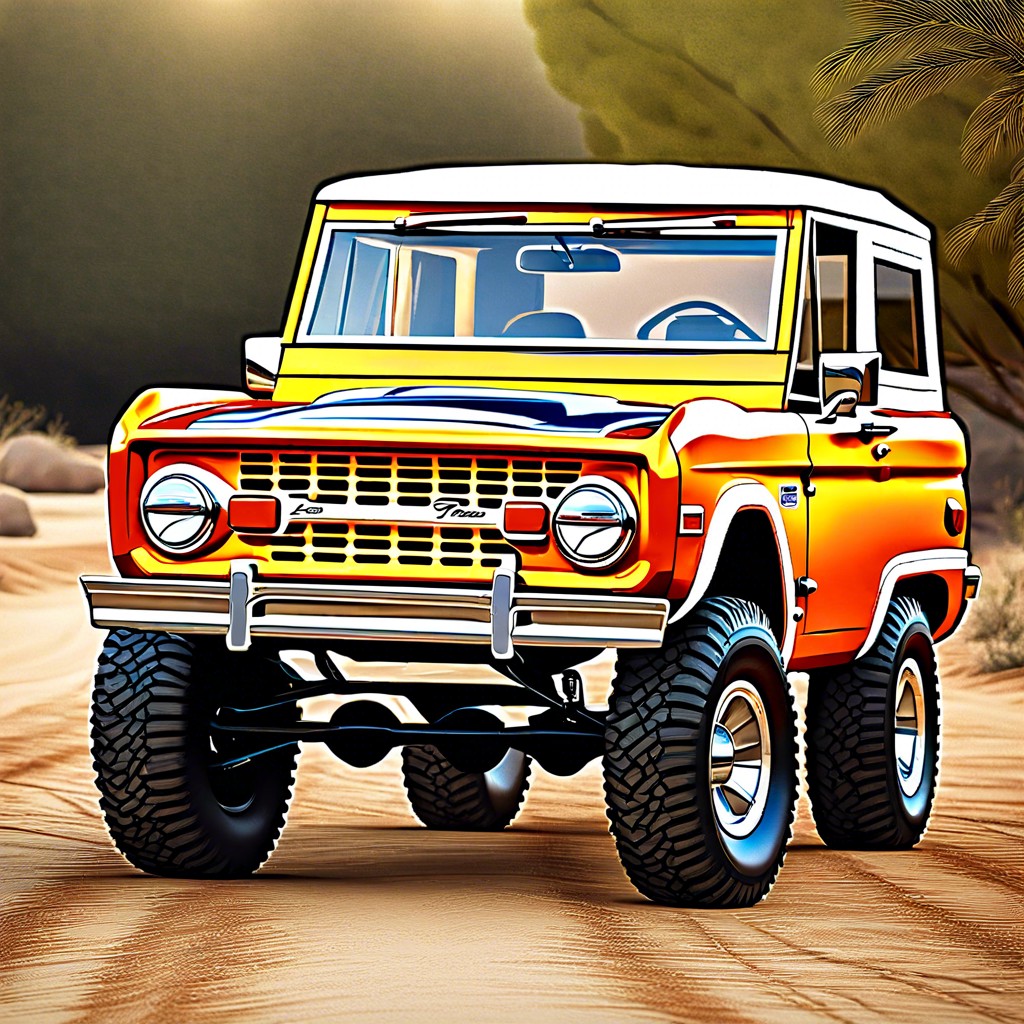
The Ford Bronco debuted in 1966 as a direct competitor to the small four-wheel-drive compact SUVs like the Jeep CJ-5 and International Harvester Scout. It was Ford’s first SUV, designed to deliver both robust off-road capabilities and comfortable on-road performance. Originally marketed as an “All-Purpose Vehicle,” its versatility appealed to a wide audience, offering various body styles, including a roadster, a pickup, and a wagon.
Throughout its initial production run until 1977, the Bronco underwent several changes. The early models are known as “Generation 1” or “First Generation,” and they showcased a simplistic, boxy design with a straightforward interior and a removable top, which has since sparked a nostalgia-driven surge in popularity.
By the early 1970s, in response to competition and consumer demand for more creature comforts, the Bronco saw significant revisions. In 1973, the Bronco was equipped with a 200 cubic inch six-cylinder engine paired with notable amenities, such as power steering and automatic transmission—previously unavailable options. During this period, improvements to the engine lineup, drivetrain, and overall utility reflected the evolving market trends.
By 1978, Ford introduced a larger, redesigned Bronco based on the F-series trucks, pivoting away from the compact SUV market and marking the end of the classic early Bronco era. This transition laid the groundwork for the modern sport utility vehicle and permanently established the Bronco as a significant chapter in automotive history.
Distinct Features of the Classic Ford Bronco
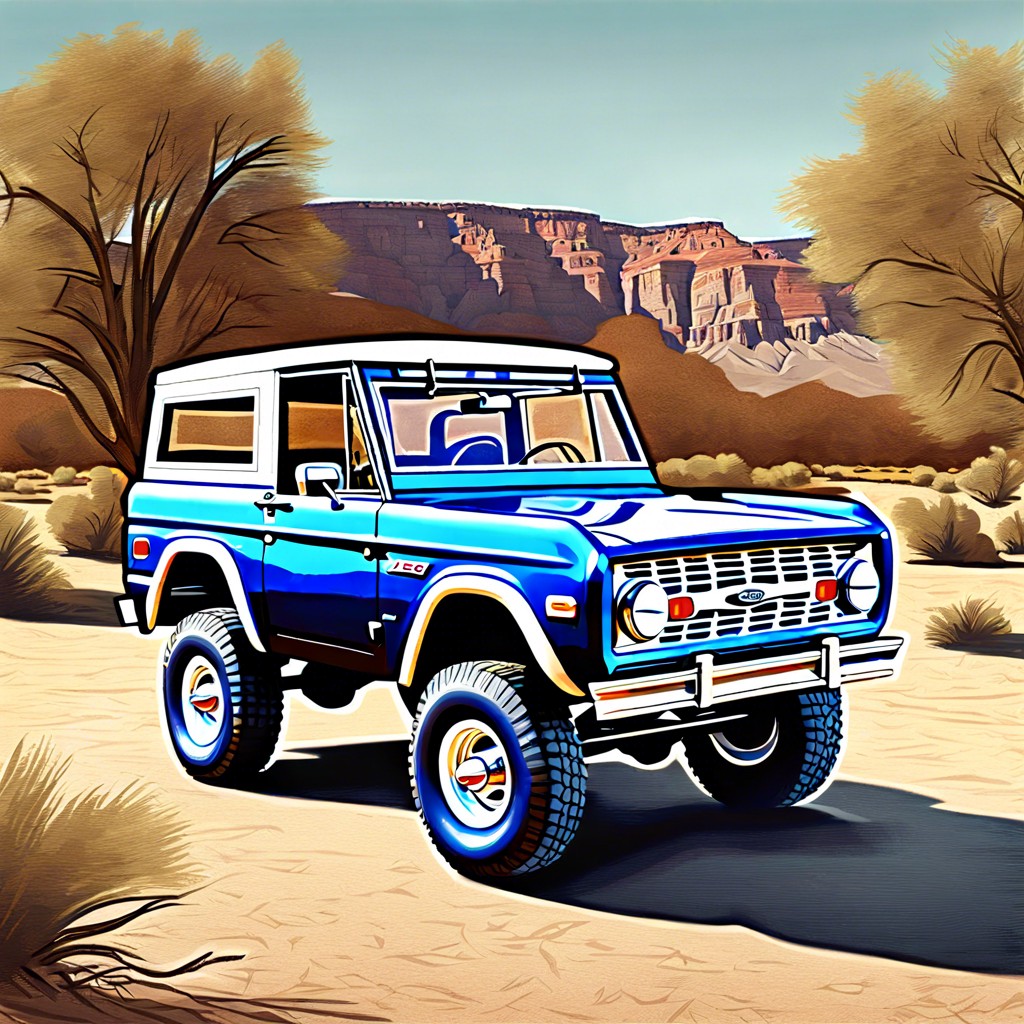
The Classic Ford Bronco, produced from 1966 to 1977, is marked by a boxy, utilitarian design that has become iconic. Its compact, two-door body sets it apart from contemporary SUVs.
Original models featured a simple, no-frills interior and a removable hardtop, which increased their appeal for outdoor and off-road use. The vehicle’s solid front axle coupled with a rear leaf-spring suspension system was engineered for sturdiness and durability.
Early Broncos were equipped with a small block V8, while later ones offered inline six-cylinder engines, showcasing Ford’s commitment to providing both power and efficiency. Notably, the 1966 Bronco debuted with a three-speed manual transmission, reflecting the era’s driving preferences.
The array of customization options available, including different roof configurations and accessory packages, underscored Ford’s intention to cater to a range of personal tastes and practical needs.
The Impact of the Classic Ford Bronco On Car Culture
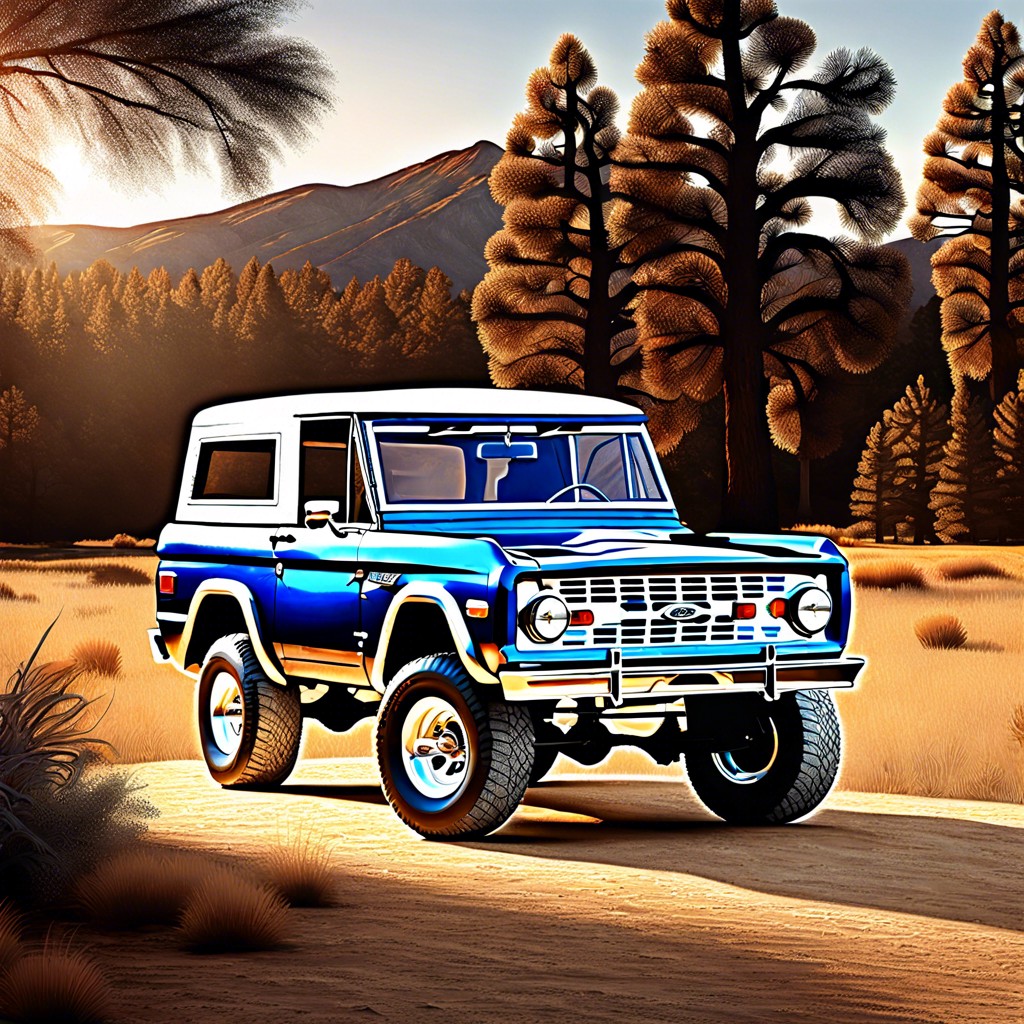
The Classic Ford Bronco resonates with enthusiasts for its embodiment of adventure and rugged individualism. It spurred an off-road culture that values the versatility and durability of a vehicle capable of tackling diverse terrains.
This iconic SUV also influenced the aftermarket industry, sparking a cottage industry of custom parts and modifications that allow owners to personalize their Broncos, enhancing both performance and aesthetics.
Across car shows and enthusiast gatherings, the Bronco’s presence is a nod to historical significance, often fanning the flames of nostalgia among generations of aficionados. Its cult-like following continues to drive interest in vintage 4x4s, laying the groundwork for the emergence of restoration shops dedicated to preserving and revitalizing these classic machines.
Collectibility and Market Trends for Classic Ford Broncos
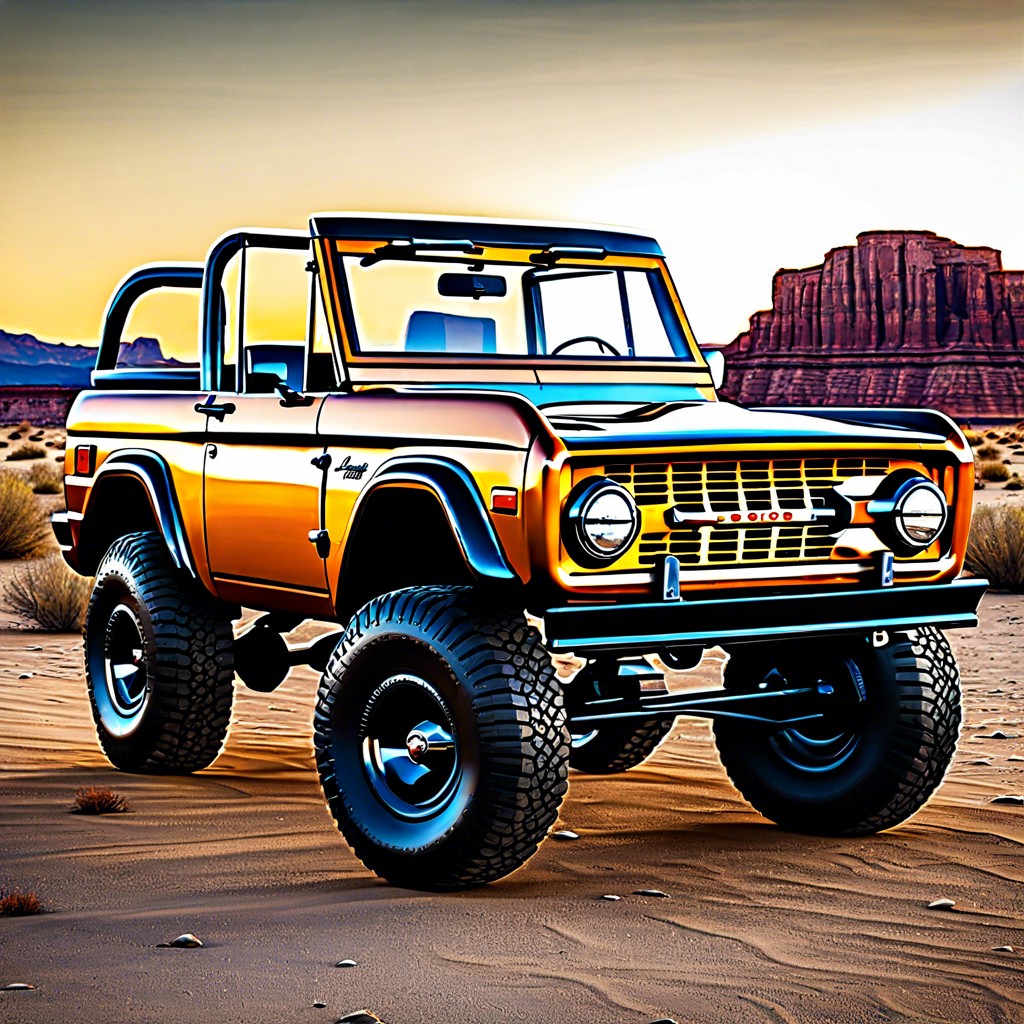
Rising demand for vintage SUVs has positioned the Classic Ford Bronco as a prominent figure in the collectibles market. Enthusiasts appreciate its rugged style, off-road capabilities, and the nostalgia it elicits.
Factors influencing collectibility include:
- Condition: Original, unrestored Broncos command higher values, while well-executed restorations are also in demand.
- Model Year: First-generation models (1966-1977) typically fetch higher prices due to their iconic status and design purity.
- Rarity: Limited edition variants or those with uncommon factory options can be more desirable.
- Provenance: A well-documented history, including previous ownership or unique stories, can enhance a Bronco’s value.
- Modification Impact: Modifications can either positively or negatively affect value, with period-correct upgrades often being more favorable.
As the market shifts, early Broncos often see appreciable growth, making them not only a nostalgic purchase but a considerable investment.
Influence of the Classic Ford Bronco On Modern SUV Design

The design principles of the Classic Ford Bronco have permeated modern SUV design in several key areas:
1. Off-Road Capability: Emphasizing the importance of versatility, the Bronco’s adeptness in off-road conditions is echoed in contemporary SUVs, which increasingly incorporate features like high ground clearance, skid plates, and four-wheel drive options.
2. Boxy Aesthetics: The Bronco’s iconic boxy shape, which optimizes interior space and provides a rugged appearance, can be seen in many modern designs. This retro-inspired trend defies the aerodynamic shapes that once dominated the industry.
3. Customization: Following the Bronco’s legacy, modern SUVs often offer extensive customization options, from cosmetic touches to performance upgrades, catering to a diverse clientele seeking personalization.
4. Simplicity of Maintenance: Influenced by the Bronco’s relatively straightforward mechanical design, many modern SUVs focus on ease of maintenance to appeal to enthusiasts who prefer self-servicing their vehicles.
5. Advanced 4×4 Systems: The original Bronco introduced many drivers to the prowess of 4×4 systems, leading to sophisticated modern equivalents that provide enhanced traction control and stability in various driving conditions.


